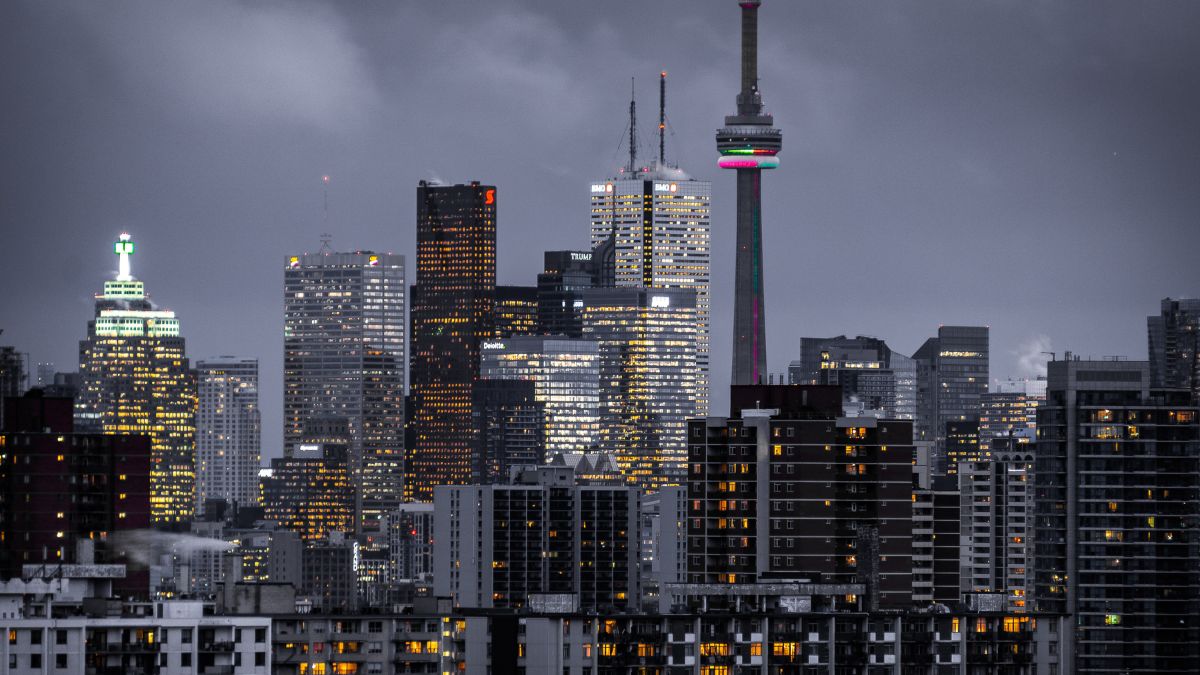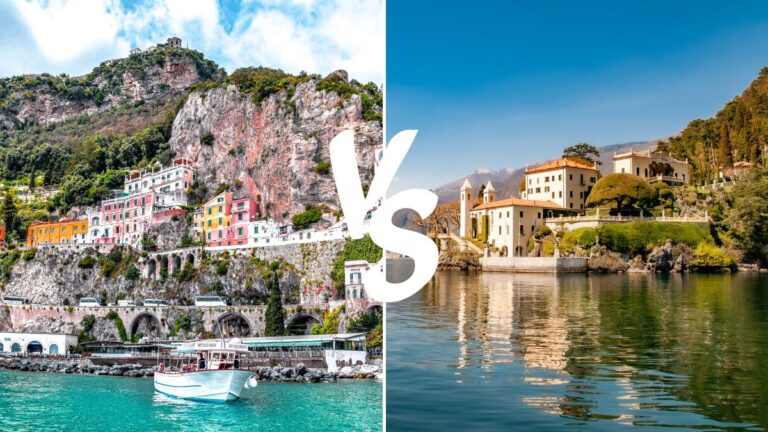Worst Time to Visit Toronto: Winter Chill and Summer Festival Crowds

As participants in Amazon Associates and other programs, we earn from qualifying purchases. This comes at no additional cost to you. For more details, see our Affiliate Disclosure.
If you’re contemplating a trip to Toronto, timing is everything. While the city, one of Canada’s vibrant metropolises, offers a wealth of attractions and experiences year-round, certain seasons can bring their fair share of challenges. From the numbing embrace of winter’s icy grasp to the pulsing congestion of summer festivals, Toronto’s seasonal extremes can often hinder rather than enhance your travel experience.
This article sheds light on the less favorable times to visit Toronto – the chill of winter and the overwhelming summer festival crowds.
The Biting Cold of Toronto’s Winter
Toronto’s winter season is often characterized by its biting cold and persistent snowfall. From December to February, the city transforms into a wintry wonderland with temperatures that often drop below freezing, sometimes reaching as low as -20 degrees Celsius.
This can be particularly challenging for tourists accustomed to warmer climates. The frigid temperatures are frequently accompanied by powerful winds that sweep across the city, lowering the ‘feel’ temperature even further. Snowstorms are common during this period, adding another layer of complexity to navigating the city.
The icy conditions can make walking treacherous and can slow down public transit, often causing delays or cancellations. While the snow-dusted skyline might offer a picture-perfect postcard image, the reality of navigating the frosty streets of Toronto can be a daunting experience for visitors unaccustomed to such chilly conditions.
Navigating Through the Snow: Toronto’s Public Transit in Winter
Toronto’s public transit system, run by the Toronto Transit Commission (TTC), is usually reliable and efficient, connecting various parts of the city through a network of subway lines, streetcars, and buses. However, winter poses unique challenges. The cold, the snow, and the ice can often lead to disruptions, making commutes longer and more difficult for visitors and locals alike.
When the city is hit by a snowstorm, expect to encounter delays and cancellations. Ice and snow can make roads treacherous and slow down buses, and even the subway can be affected by severe weather. Despite the efforts of city services to keep transportation running smoothly with snow plows and salt trucks, extreme weather conditions can overwhelm their capacity.
Furthermore, navigating the city by foot or bike can be more dangerous due to icy sidewalks and bike lanes. While the city endeavors to clear sidewalks promptly, the sheer volume of snow during a storm can mean that it takes time to clear all areas.
It is crucial to stay updated on weather forecasts during your visit and check TTC advisories for any service disruptions before making travel plans. Be prepared for potential changes and allow extra time to reach your destinations. Despite these challenges, remember that winter in Toronto also brings a unique charm to the city that can still be enjoyed with a bit of planning and a lot of warm layers.
Winter Activities: The Silver Lining of Toronto’s Winter Season
Despite the biting cold and travel disruptions, Toronto’s winter season also brings with it a plethora of recreational activities that turn the city into a winter wonderland. These activities not only make the chilly weather bearable but also add a unique charm to the city that can be experienced nowhere else.
- Ice Skating: Toronto has numerous outdoor ice rinks that become social hotspots during the winter season. Nathan Phillips Square, in particular, is a must-visit, offering free ice-skating right in front of the beautiful city hall building. Other popular options include the Harbourfront Centre’s Natrel Rink and the Evergreen Brick Works’ skating rink.
- Winter Festivals: Toronto is home to several winter festivals that light up the city. The Toronto Light Festival in the Distillery District, Winterlicious culinary event, and the Winter Stations art installations on the Beaches are a few examples that make the city vibrant even during the coldest months.
- Snowshoeing and Cross-Country Skiing: Several parks around Toronto, like the Rouge National Urban Park and High Park, offer trails for snowshoeing and cross-country skiing.
- Holiday Markets: The Toronto Christmas Market, held in the Distillery District, is a popular attraction, with its stunning light displays, local vendors, and festive atmosphere.
- Winter Sports: Catch a Toronto Maple Leafs hockey game or a Toronto Raptors basketball game for a true Canadian sports experience.
Embracing the cold and making the most of these seasonal activities can turn what might seem like the “worst” time to visit Toronto into an unforgettable winter adventure.
The Sweltering Congestion: Toronto’s Summer Festivals
As the snow melts and Toronto blooms into the warm embrace of summer, the city bursts into life with a vibrant array of festivals and events that attract visitors from around the globe. While these events can offer a fantastic way to immerse yourself in the city’s culture and spirit, they also contribute to a significant surge in visitor numbers, resulting in crowded streets, busy attractions, and heightened prices.
Toronto’s summer, from June to August, is festival season. The city hosts internationally recognized events such as the Toronto International Film Festival (TIFF), Pride Toronto, the Toronto Caribbean Carnival, and many music and food festivals. These events draw large crowds, creating a bustling, energetic atmosphere, but also considerable congestion.
Public transportation becomes crowded, with routes to popular event venues often packed. The surge in demand also extends to accommodations and dining, leading to inflated prices and the need for advanced booking. Furthermore, popular attractions such as the CN Tower, Royal Ontario Museum, and Ripley’s Aquarium can become particularly busy, resulting in long wait times.
However, despite the congestion and sweltering summer heat, these festivals contribute to the lively ambiance that makes Toronto summers uniquely attractive. If you’re willing to face the crowds and the occasional high temperatures, you’ll find a city filled with vibrancy, diversity, and celebration.
The Perks and Pitfalls of Toronto’s Festival Season
Festival season in Toronto brings both excitement and challenges. As the city vibrates with the energy of numerous cultural, film, music, and food festivals, the experience can be both exhilarating and overwhelming for visitors.
Perks of Toronto’s Festival Season
- Cultural Immersion: Festivals such as the Toronto Caribbean Carnival and Pride Toronto offer a deep dive into the diverse cultures that make up Toronto’s social fabric. They offer a unique opportunity to witness and participate in the city’s multicultural identity.
- International Recognition: Events like the Toronto International Film Festival (TIFF) attract a global audience and bring a touch of glamour to the city. If you’re a film enthusiast, attending TIFF can be a highlight of your visit.
- Culinary Delights: Toronto’s food festivals showcase the city’s vibrant culinary scene. From Taste of the Danforth, celebrating Greek food and culture, to the Toronto Food Truck Festival, these events offer a chance to sample a wide array of cuisines.
Pitfalls of Toronto’s Festival Season
- Crowds and Congestion: The popularity of these events can lead to crowded venues and public transport, as well as congested streets. This can make navigation more challenging and time-consuming.
- Increased Prices: High demand during festival season can lead to price hikes, particularly for accommodations. Restaurants and attractions in the vicinity of major events may also charge premium rates.
- Heat and Humidity: Toronto’s summer can be hot and humid, which might be uncomfortable for some, especially when coupled with large crowds.
Balancing these perks and pitfalls can help you make the most of your summer visit to Toronto. It’s always advisable to plan ahead, book accommodations in advance, stay hydrated, and be prepared for the heat and crowds.
Alternative Visit Times: Balancing Climate and Crowds in Toronto
While the chill of winter and the bustling summer festival season have their pros and cons, you might be seeking a more balanced travel experience in Toronto. If that’s the case, consider visiting during the spring or fall when the city’s climate and crowds are typically more moderate.
Spring (April to June)
Springtime in Toronto brings milder temperatures, ranging from 8°C to 20°C. The city starts to awaken from its winter slumber, and the parks and gardens begin to bloom, offering beautiful landscapes.
Tourist crowds are still relatively thin compared to summer, making it a comfortable time to explore. Key events include the High Park Cherry Blossom bloom and the Hot Docs Film Festival.
Fall (September to November)
Fall is arguably the most beautiful time to visit Toronto. The temperatures range from 3°C to 18°C, and the city is painted in vibrant hues of red, orange, and yellow. Like spring, the tourist crowds during this season are manageable.
Fall also hosts the renowned Toronto International Film Festival, but the city is generally less congested than in the peak of summer. Plus, you can enjoy unique activities like apple picking at nearby orchards or hiking in conservation areas to appreciate the fall foliage.
Tourist Tips: Surviving Toronto’s Winter and Summer Festival Madness
Despite the challenges, a visit to Toronto during winter or the summer festival season can be a memorable experience. Here are some tips to make the most out of your visit during these periods:
Surviving Toronto’s Winter
- Dress Appropriately: Layering is crucial to staying warm. Wear thermal underclothes, followed by a good quality sweater or fleece, and then a wind and water-resistant outer layer. Don’t forget warm socks, gloves, a hat, and a scarf.
- Footwear: Ensure you have waterproof and insulated boots that offer good grip for icy conditions.
- Stay Informed: Keep an eye on the weather forecast, and plan your activities accordingly.
- Public Transportation: Rely on the TTC for getting around. Just be prepared for potential delays due to weather conditions.
- Enjoy Winter Activities: Embrace the cold and participate in winter-specific activities like ice-skating, attending a winter festival, or even just enjoying a walk through the snow-laden streets.
Navigating the Summer Festival Season
- Plan Ahead: The city gets busy during the summer festival season, so plan and book your accommodation, festival tickets, and even restaurant reservations in advance.
- Stay Hydrated: Toronto’s summer can be hot and humid, so carry a water bottle with you at all times.
- Use Public Transport: Toronto’s public transport system is extensive and can be easier and more cost-effective than trying to park in the city during busy times.
- Stay Informed: Keep up-to-date with festival schedules and locations. Some events can result in road closures.
- Take Breaks: Schedule downtime between activities to avoid festival fatigue. There are many tranquil parks and waterfront spaces where you can unwind.
Experiencing the city at its most extreme or its most vibrant can give you a truly unique insight into life in Toronto. With a bit of preparation and a flexible attitude, you can not only survive but truly enjoy what these seasons have to offer.
Reconsidering Your Travel Plan: Off-Season Visits to Toronto
If you’re hesitant about braving Toronto’s harsh winter or navigating the bustling summer festival season, it may be worth considering an off-peak visit. Both spring and fall offer milder weather and thinner crowds, making them ideal for a more relaxed exploration of the city.
Spring (April to June): As the city shakes off the chill of winter, the blossoming of parks and gardens breathes new life into Toronto. The city’s attractions are less crowded, and the climate is mild, making it perfect for exploring Toronto’s outdoor spaces. Spring in Toronto also offers unique experiences like the Sakura cherry blossom bloom in High Park.
Fall (September to November): The fall season transforms Toronto into a beautiful spectacle of vibrant fall foliage. The temperatures are comfortable for exploring the city, and it’s typically less crowded than during the peak summer months. Fall also features exciting events like the Toronto International Film Festival and Nuit Blanche, an annual night-time arts festival.
By reconsidering your travel plans and opting for an off-peak visit, you can enjoy all that Toronto has to offer in a more relaxed manner. It’s a chance to explore the city’s attractions at your own pace, experience unique seasonal events, and enjoy the city’s beauty without contending with extreme weather or overwhelming crowds.
The Final Verdict: Is Winter and Summer Really the Worst Time to Visit Toronto?
Determining the “worst” time to visit Toronto ultimately depends on what you’re looking for in your travel experience. The city, in all its seasonal guises, offers unique experiences that can be enjoyed with the right preparation and mindset.
Yes, Toronto’s winter can be bitingly cold and disruptive, but it also transforms the city into a winter wonderland, offering ice-skating, winter festivals, and the charm of snow-dusted streets. If you’re equipped to handle the cold and prepared for possible transit disruptions, you can enjoy a side of Toronto that’s as beautiful as it is unique.
Similarly, the summer festival season brings with it swelling crowds and a marked increase in prices, but it’s also the time when the city is at its most vibrant. The festivals are a testament to Toronto’s rich cultural diversity and the lively spirit of its people. If you’re someone who enjoys high-energy environments, doesn’t mind the heat, and is prepared to navigate through crowded spaces, you’ll find the summer festival season an exciting time to visit.
Spring and fall, meanwhile, offer a more balanced blend of milder weather and thinner crowds. They can provide a more relaxed travel experience, but they also come with their own unique events and charms.
In conclusion, there’s no definitive ‘worst’ time to visit Toronto – each season has its challenges, but also its unique appeal. It all comes down to your personal preferences, tolerance for certain weather conditions, and what you want to get out of your visit. Toronto, no matter the season, is a city with much to offer.






